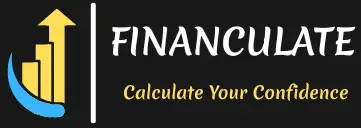Shunning a 401(k) doesn’t mean you can’t retire comfortably. Identifying creative methods to secure your financial future is entirely possible. Though a 401(k) is a popular retirement tool in the USA, many other paths lead to a prosperous retirement. For the self-employed, those on part-time schedules, or individuals preferring different methods, options abound to grow that nest egg. I’ll reveal some excellent avenues so even without a 401(k), you can diversify your retirement portfolio effectively.
No 401(k) at Work? You’ve Still Got Great Retirement Options!
It’s a common situation: In 2024, nearly a quarter of all full-time workers in the U.S. didn’t have access to a 401(k) through their job. But don’t worry, that doesn’t mean your retirement dreams are out of reach! You can still build a substantial nest egg, especially if you start early.
The key is to explore other tax-advantaged retirement accounts that you can open on your own. Here are some fantastic options:
- Traditional and Roth IRAs: These are popular choices. A traditional IRA offers tax deductions on contributions now, while a Roth IRA gives you tax-free withdrawals in retirement.
- SEP and SIMPLE IRAs: If you’re self-employed or own a small business, these can be excellent ways to save a significant amount for retirement.
- Spousal IRA: Even if your spouse doesn’t work, you might be able to contribute to an IRA for them, helping you both save for the future.
- Solo 401(k): This is another powerful option for self-employed individuals, allowing for higher contribution limits than a regular IRA.
Beyond these, consider using annuities or a Health Savings Account (HSA) to boost your retirement savings. HSAs are particularly great because they offer a triple tax advantage: tax-deductible contributions, tax-free growth, and tax-free withdrawals for qualified medical expenses in retirement.
And while they don’t offer the same tax benefits as dedicated retirement accounts, don’t overlook non-retirement investments. They can still provide high returns and play a valuable role in your overall financial plan.
The most important thing is to get started. Even without a workplace 401(k), you have plenty of ways to secure your financial future!
1. Individual Retirement Accounts (IRAs):
These accounts provide solid choices alongside 401(k) plans. They split into two core types: Traditional IRA and Roth IRA, each bringing tax perks. A Traditional IRA can reduce your taxable income today, with withdrawals taxed later. Roth IRAs take after-tax dollars now for tax-free withdrawals later. Assess your current and future tax scenarios to decide what suits your needs best.
2. Health Savings Accounts (HSAs):
An HSA offers often-overlooked advantages for future planning. Initial favorites for medical costs, HSAs bring threefold tax benefits: deductible contributions, tax-deferred growth, and tax-free withdrawals for qualified expenses. Once you hit 65, withdraw funds for any purpose just like a Traditional IRA, minus penalties.
3. Brokerage Accounts:
Dive into a brokerage account to access a world of stocks, bonds, mutual funds, and ETFs. Tax liabilities on profits and dividends are a consideration, yet the flexibility is unmatched. This choice offers broad investment freedom where tactical diversification can greatly limit stock market fluctuations.
4. Real Estate Investments:
Real estate presents captivating opportunities outside 401(k)s, often yielding appreciating tangible assets. Whether buying properties or engaging with Real Estate Investment Trusts (REITs), it’s appealing. Rental properties can provide steady income and generate wealth through property value growth.
5. Annuities:
Think about annuities for a guaranteed income stream, secured via agreements with insurance entities. Fixed annuities offer consistent payouts, while variable ones allow investment with possible higher returns. It’s crucial to weigh costs and restrictions before choosing this option.
6. Regular Savings and Investment Plans:
Adopt a steady and disciplined savings route through automatic transfers to savings or investment accounts. These contributions, although modest, eventually multiply through compound interest, significantly aiding long-term financial aims.
7. Side Hustles and Passive Income:
Expand income avenues with side jobs or by earning passive income. Activities like freelancing or renting out space bolster your retirement funds, bringing financial security and extra investment funds your way.
Conclusion:
Planning retirement without a 401(k) calls for informed decisions and diverse saving tools. Employ IRAs, HSAs, market positions, real estate, annuities, steady savings, and engage in side projects to edge closer to millionaire status. Evaluate your risk comfort levels, stay updated on investment variations, and tweak your plans as goals shift. With commitment and variety in your investments, securing your financial future becomes achievable.
For more information, visit the full article on Investopedia.

